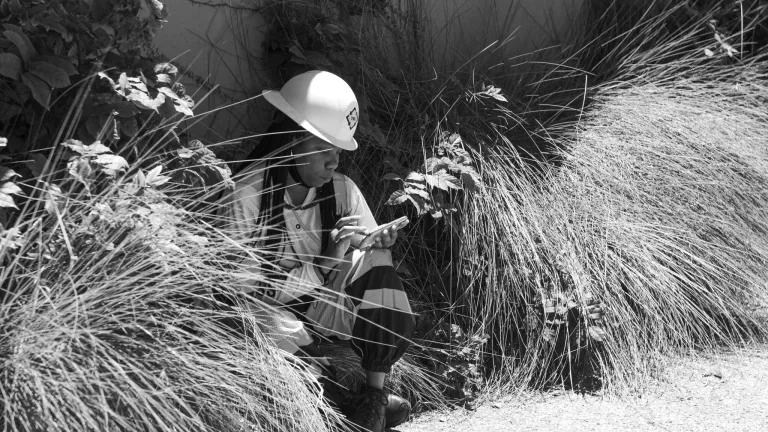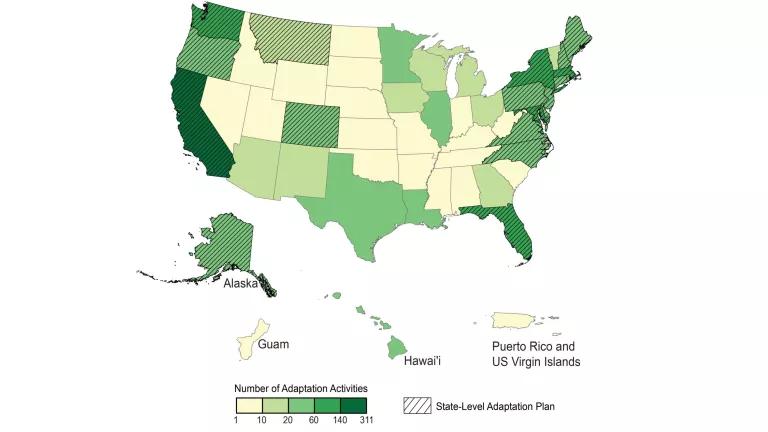
It’s springtime again and tree pollen fills the air. Neighborhoods in many parts of the U.S. are seeing thick yellow pollen carpets on sidewalks and car hoods. It’s not just a rite of spring, though, because millions of Americans are highly allergic to tree pollen. I know from my work on climate change and health at NRDC that pollen plus other health-harming air pollutants like ozone smog are both worsened by climate change’s effects. It’s a health double-whammy for those allergic to pollen, people with asthma, or both. Pollen production season for allergenic plants like ragweed is already more than 3 weeks longer in some parts of North America than it used to be 20 years ago, because of warming temperatures. As temperatures rise, not only do pollen-producing plants work overtime, but ground-level ozone smog concentrations also increase. So as lovely as warming temperatures may feel, they can spell trouble for air quality—a big concern for 24 million Americans with asthma and 25 million with hay fever.
Aeroallergens and other air pollutants like smog and fine particles are pressing concerns, here and now. Globally, 3.3 million people die each year from the effects of outdoor air pollution. Here at home, the American Lung Association released its annual State of the Air report this week, and the news isn’t great. The report finds that, despite progress made by federal, state, and local governments to clean up our country’s air, more than half of Americans—166 million people—live in areas where air pollution levels are often dangerous to breathe.
Now, a subcommittee of the U.S. House of Representatives is considering legislation that would make the situation even worse. The so-called “Ozone Standards Implementation Act” would delay the newly-finalized ozone health standards, result in increased air pollution and systematically weaken one of our bedrock public health laws, the Clean Air Act. NRDC sent a letter to the House Energy & Commerce Committee detailing numerous harms and attacks on clean air and public health in the legislation. A coalition of public health groups also blasted the bill.
In a move surprising no one, more than 200 industry groups on Monday—including coal, oil, and chemical interests—loudly cheered the legislation in a letter to Congressional leaders. But we know more now about the dangers of air pollution than ever before—and this legislation takes us backwards when we need more progress.
This bill would be highly damaging even if climate change didn't exist. But climate change makes it even more so. The proposed bill (H.R.4775) ignores the immediate health threats of dirty air and the longer-term threat of climate change, laid out by experts in the recently-released federal Climate Health Assessment. Ozone smog today, along with climate-driven ozone increases in the future, contributes to premature deaths, hospital visits, lost school days, and other acute respiratory symptoms.
Importantly, the Climate Health Assessment finds that climate change likely will make it harder for safeguards in the Clean Air Act to effectively reduce ground-level ozone pollution. In other words, to keep up with climate change, we need deeper cuts in the air pollution that forms ozone—not delays. According to one of the studies highlighted in the assessment, climate change could potentially result in hundreds to thousands more ozone-related deaths and illnesses each year by 2030.
Public health and medical professionals are connecting the dots between climate change, air quality and our health. The American College of Physicians just issued a position paper on the urgency of tackling climate change. About two-thirds of surveyed allergists, asthma specialists, lung doctors and physicians in the National Medical Association say they consider climate change relevant to direct patient care. Let’s listen to these health experts and demand actions that protect the nation’s health, especially with continued record-breaking global temperatures and forecasts for more polluted conditions in the future.
Let’s do everything we can to protect our air now, so that in the future, spending more time outdoors as spring arrives will be something our kids will still be eager to do.



